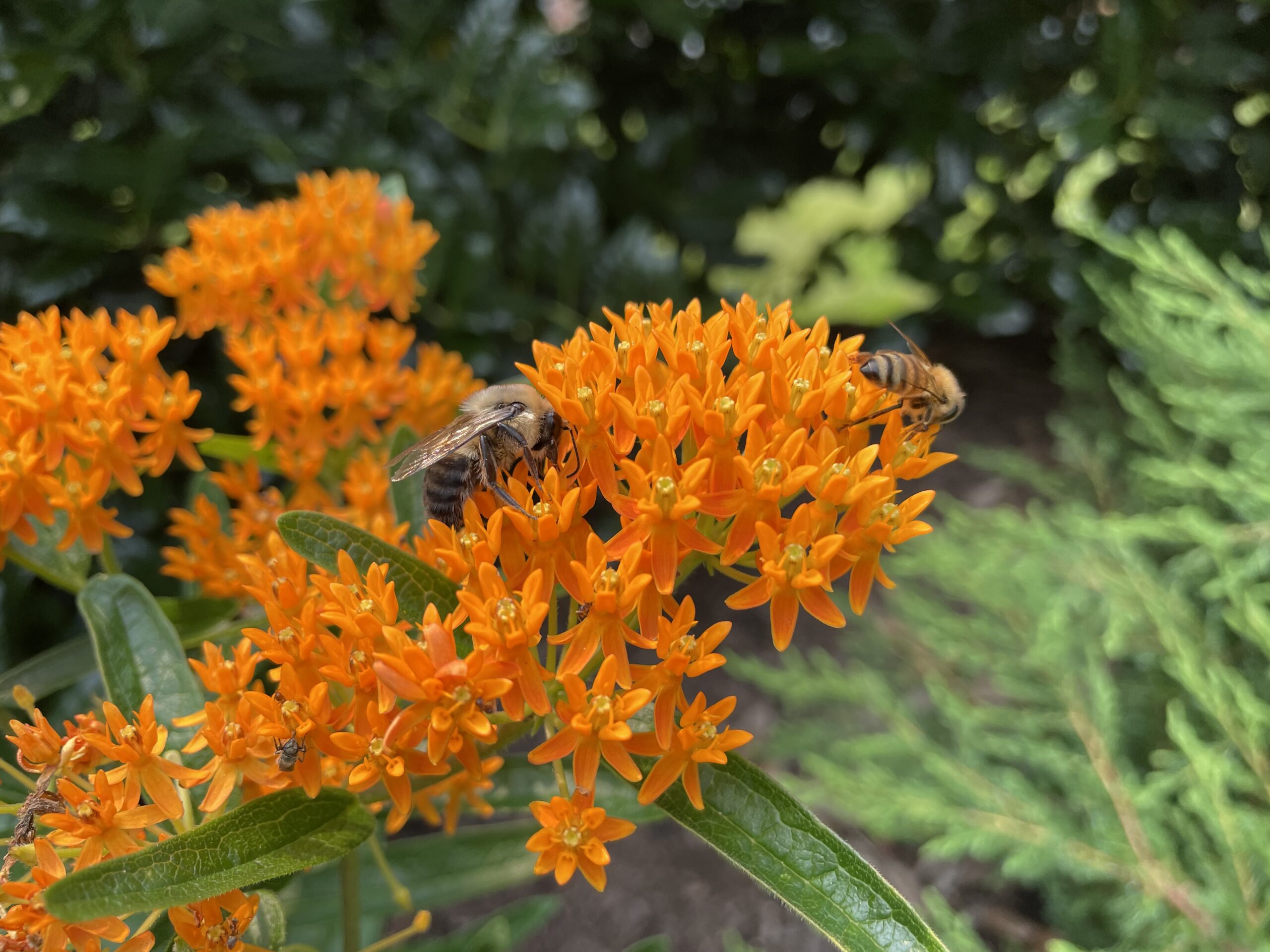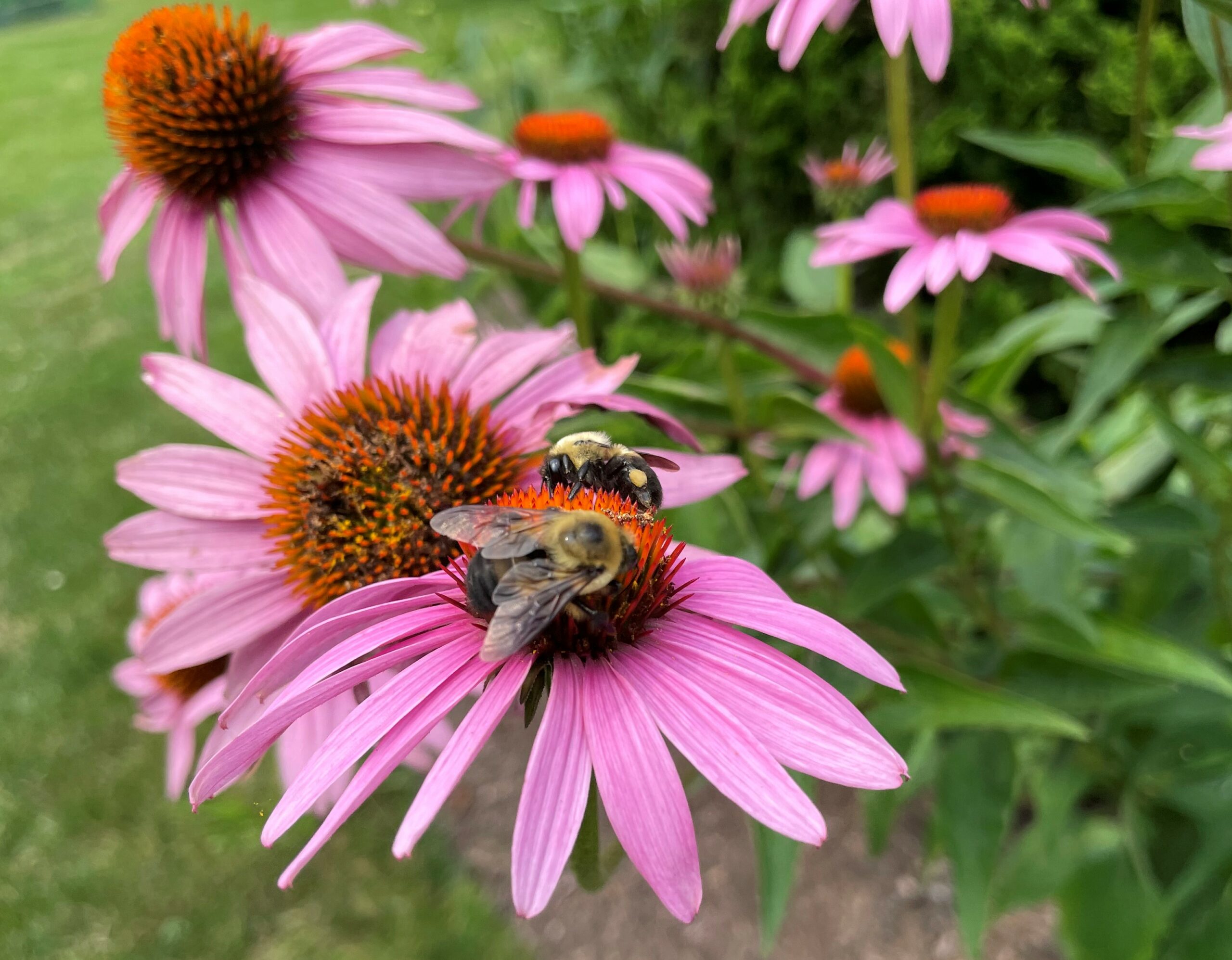This article first appeared in the BLCT Summer 2021 Newsletter. If you would like to receive the BLCT quarterly newsletter, click here to go to our sign-up page.
By Ann Brouillette. Photos by Mary Grover
Most of us who have heard that bees are in trouble think of honey bees. Honey bees are used all over the world to pollinate agricultural crops and, of course, to make honey. While honey bees are in trouble, they are not native to North America and they are not the bees we are talking about when we encourage people to plant native plants and preserve native habitats. We are talking about native bees. There are about 4000 species of bees native to North America and their populations have declined by as much as 50%. The decline is caused by habitat loss, use of pesticides, and introduced diseases.
Native bees come in many shapes and sizes. There are the bumble bees, which have been called the teddy bears of the bee world, and there are bees that are so tiny it is hard to see them. Some bees are specialists – they only eat the nectar or pollen from one species of plant – and some are generalists and will feed at many different plants. Unlike honey bees, 90% of native bees are solitary – they do not live in colonies and do not produce honey. And unlike honey bees they will only sting if you grab them.
Why are native bees important? They pollinate nearly all of our native flowering plants. Without pollination, plants don’t make seeds, and seeds are one of the most important food sources for birds and many other animals. Bees are the most important pollinators, but other pollinators – wasps, moths, and butterflies – are in decline also. It is not a coincidence that the number of song birds is estimated to have decreased by one to three billion since 1970 as the loss of habitat and pollinators has occurred.
You can help to solve the pollinator crisis in a meaningful way by planting native plants in your yard. Even adding a small area of native perennials, or a native shrub or tree, will help. You can create nesting sites by leaving some leaves in your beds over the winter. Many bees nest in the ground and leaves left on the ground help keep them warm enough to survive the winter. By not using pesticides you can contribute to the health of all of our native fauna as well as bees.
If you want to learn more about native bees, the following books are excellent: Buzz by Thor Hanson and two books by Heather Holm: Pollinators of Native Plants and Bees. Pollinator-pathway.org has excellent information about pollinators and pollinator plants, and if you plant some natives, you can put your property on the Barrington Pollinator Pathway map on this site. Another excellent source of information is beecology.wpi.edu.


